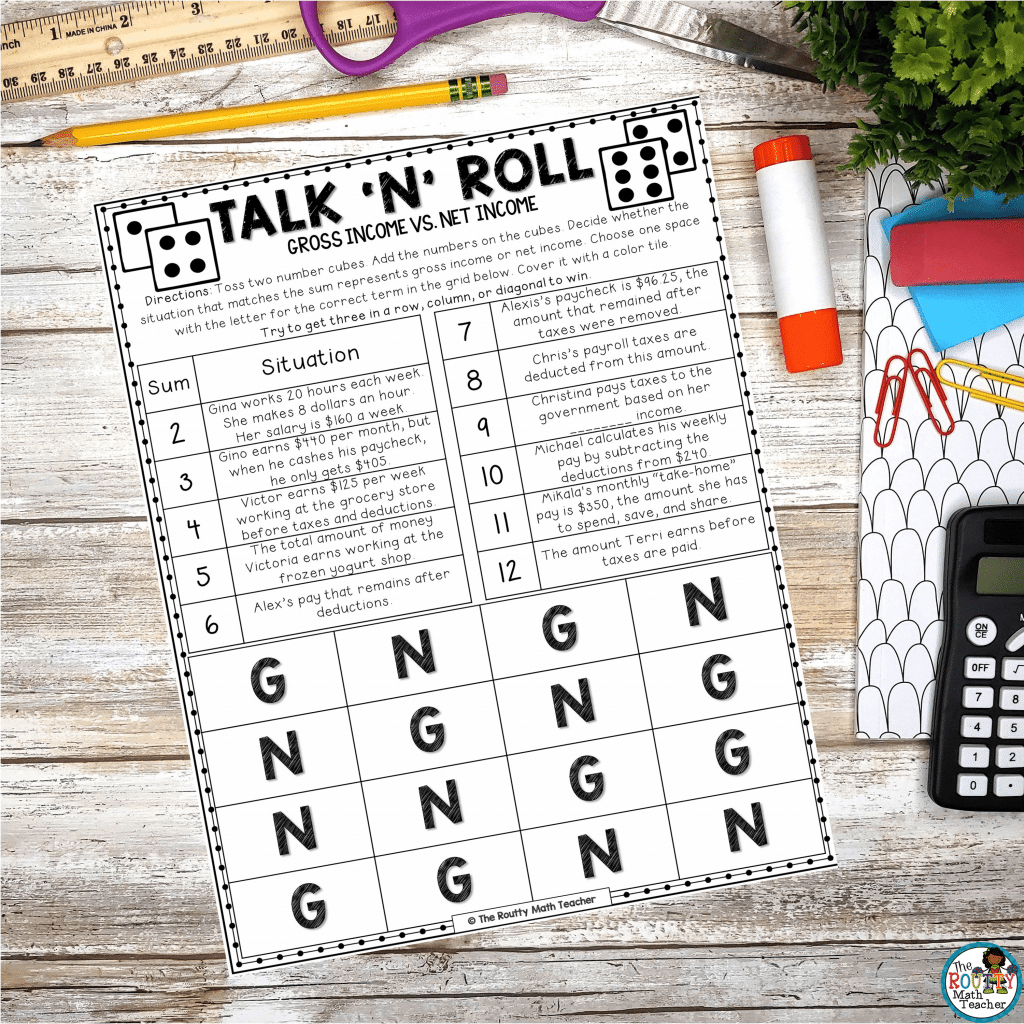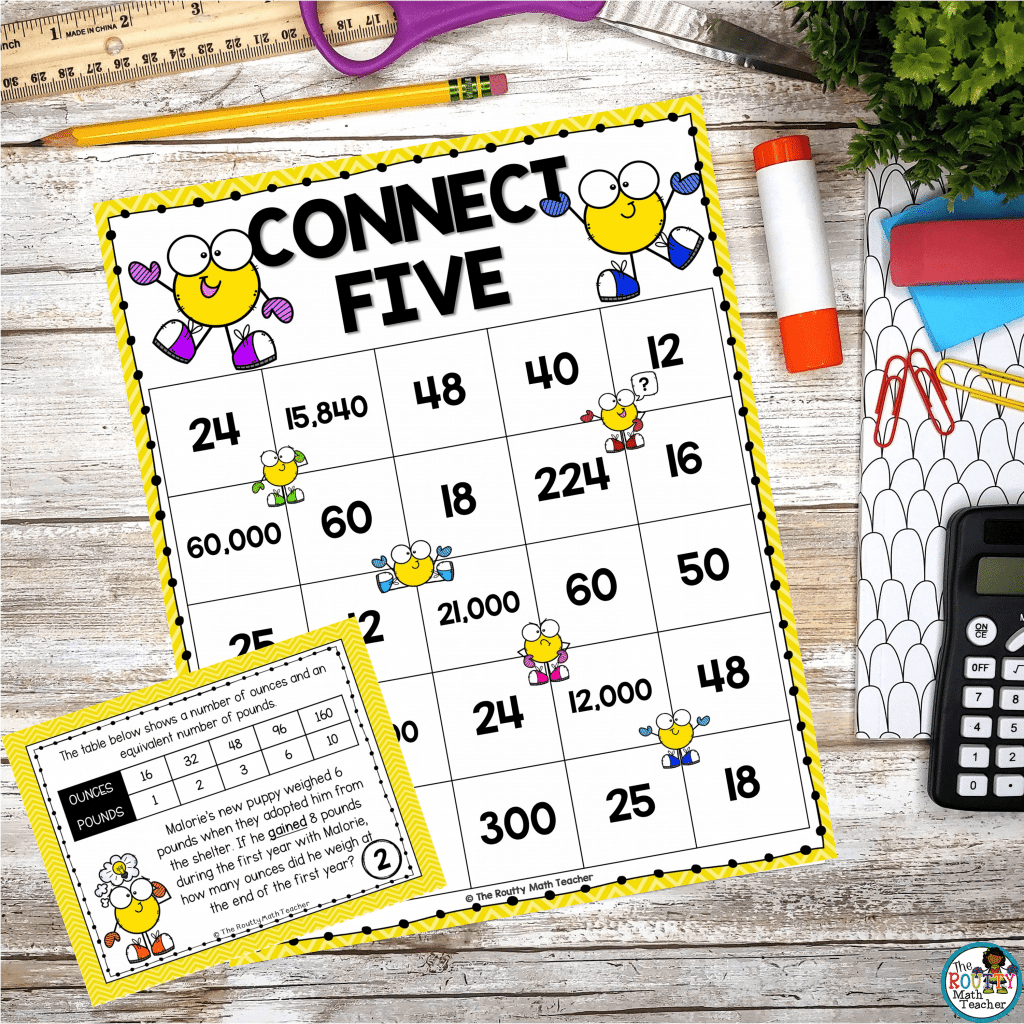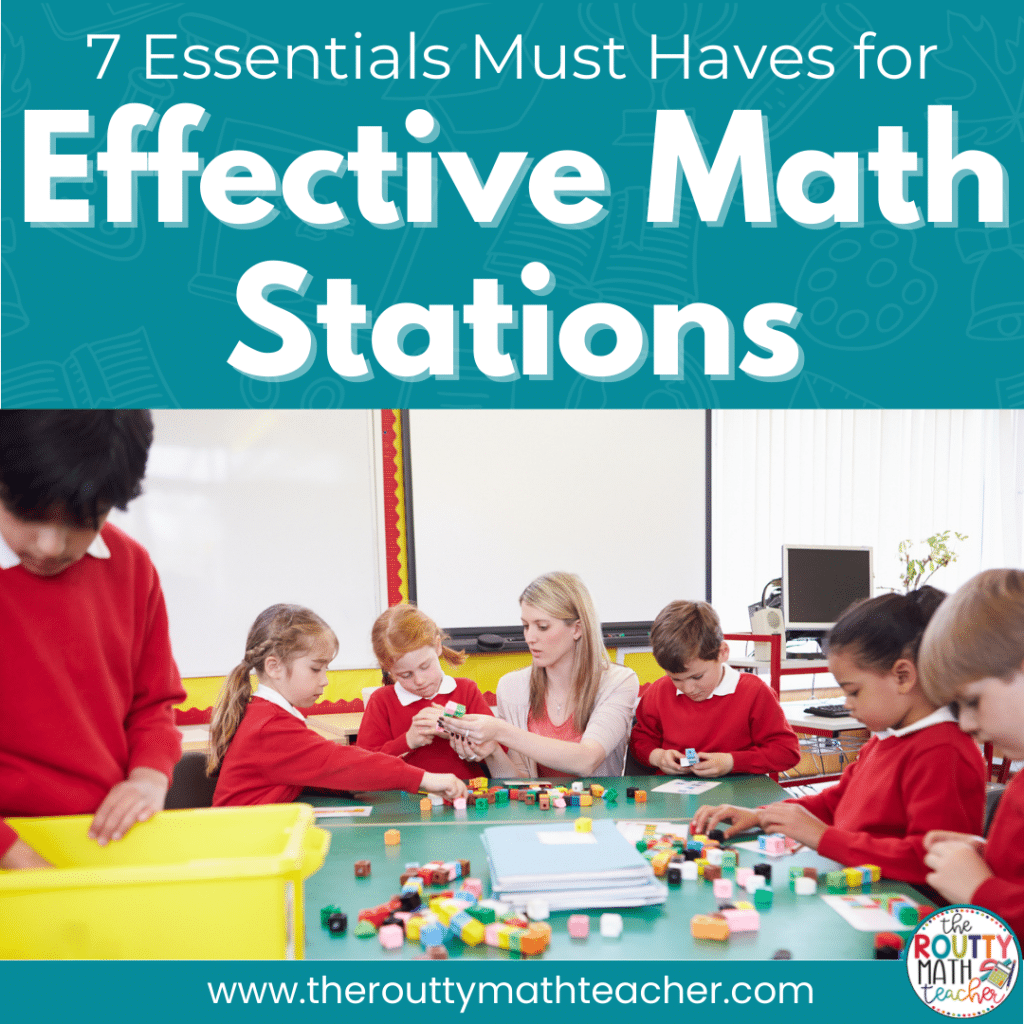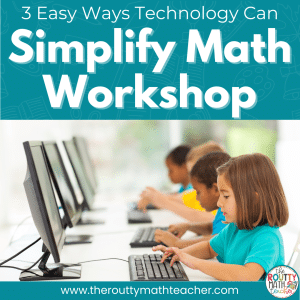Every teacher has a few favorite teaching resources and materials they can’t live without. In this blog post, I share seven math station ideas with my “must-haves” for building effective math stations.
As I scanned my inbox, an email titled “Important information about your storage space” caught my attention.
I opened the email to find the words “water infiltration” and “your space 1040 was likely impacted.” 😳
Oh, boy!
Needless to say, when I lifted the gate to the storage unit a few days later, I could see the water lines on my boxes. One ice storm destroyed nineteen years of my teacher life. 😞
As my hubby and I waded through the debris, I chuckled thinking about some of the things I used to use in the classroom.
The best thing was a huge wheel I used during math stations— I mean HUGE.
My Station Rotation Wheel
The diameter was a foot and a half across. I divided it into six sections and used a colored piece of cardstock to create each section of the wheel.
I remember being so excited about my math station wheel until I thought about how I would be able to get it to spin. A little brad was not sturdy enough to penetrate two layers of heavy paper.
I was able to get the brad through but it was a little wimpy and the wheel never worked well. #epicfail
I couldn’t help but laugh at all the time I spent trying to create the perfect system for my math station rotation.
That was back in my early days in the classroom. Things changed a lot over the years. I stopped obsessing over having the right rotation board and started focusing on the most practical tools to get the job done.
Math Station Ideas
As I perfected my systems over the years, I discovered several math station tools I couldn’t live without.
1. Timer
A timer is an essential math station tool. TeachTimer was my favorite because it allowed me to give students a warning that the station time was about to end. This was an essential strategy for math stations in my classroom because I required students to have their stations cleaned up and ready for the next group by the end of the station time, so providing a one-minute reminder was helpful.
2. Rotation Board
Like the huge rotation wheel I created in my early days, a rotation board is an essential management tool. It helps the students know where to go next in the rotation cycle. There are many ways to establish a math station rotation board, such as via poster board or using classroom bulletin board space. Recently, digital station rotation boards have gained popularity because they can be displayed when needed and do not require the use of classroom space.

3. Cards and Dice
One of the math tools I use most often are simple card and dice games, such as Connect 4, Connect 5, Cover Up, and Talk ‘n’ Roll games. Card games, such as war, and activities where students build computations with playing cards are also easy to implement and make great additions to math stations. Playing cards and six-sided dice are available at a local dollar or discount store.
4. Storage Containers
From station baskets to plastic bags, keeping math station materials organized is essential to successfully manage math stations. For station baskets, I like to use colorful, rectangular-shaped baskets. I then assign each station a color so students know which basket goes with each station. I use plastic bags to store games and other materials. Over the years, I found specialty bags, like book bags, to be helpful for storing file folder games and games with different size materials; however, gallon-size bags are a great substitute.
5. Manipulatives
Easy access to math tools such as Base 10 Blocks, counters, geared clocks, pattern blocks, and measurement tools is important to allow students to utilize tools to construct knowledge during math station activities. When specific activities require the use of certain materials, I place them in plastic bags and add them to station baskets. Other times, I place materials in a location that is easily accessible for all students so they can grab what they need.
6. Self-checking Activities
One of the tools I have found to be most useful are self-checking activities because they give students immediate feedback and do not require grading. 😁 My favorite self-checking activities are electronic flashcard games, like MathShark or Math Whiz, that allow students to practice math facts and basic computation skills. Self-checking activities, like VersaTiles are easy-to-use and review a wide variety of grade-level content and skills.

7. Task Cards
I know many teachers enjoy using task cards in the classroom. Because they are available from a variety of sources, they’re math station staples. Not only can they be used as an independent activity, when paired with a simple game board or Cover Up-style game, but they also create a quick cooperative learning activity students can complete in small groups.
It’s the Little Things
Many of my favorite math station ideas may seem insignificant in the grand scheme of things, but they play a huge role in the effectiveness of my math station rotation. When you find your groove, you’ll develop your own set of must-haves.
To help you get started, I’m sharing my Editable Cover Up Game with you. Download it using the form below.
Sound Off!
What are your math station must-haves? Respond in the comments section below.






2 Responses
I love doing stations in class and this technique is what saved me when teaching the behavioral self-contained classroom.
I love hearing that! Thank you for sharing, Shannon!
~ Shametria